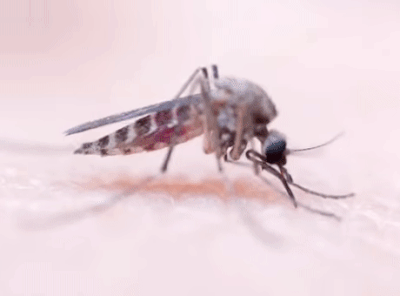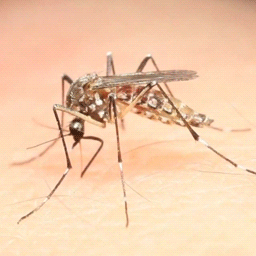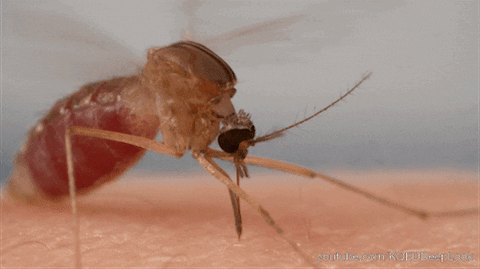Public Enemy Number One: The Mosquito
by Kenneth Lyen
Singapore Medical Association News 2020; 52: 25-27.

MOSQUITOES AND GLOBAL WARMING
The recent surge in dengue fever, zika, chikungunya disease, and yellow fever, correlates with the proliferation of mosquitoes in those countries affected. This escalation is likely to be due to global warming which increases the breeding habitat for mosquitoes (1,2). Admittedly there are other diseases and medical problems associated with climate change, but we shall confine our discussion to mosquito-borne diseases. Are we to take the blame for our failure to curb global warming? Certainly 16-year old Greta Thunberg in her speech to the United Nations in September 2019 thinks so (3). Yes, I’m afraid that the older generation, through our inaction, must bear much of the responsibility for climate change and the ensuing increased incidence of associated diseases.

MOSQUITO-BORNE DISEASES ARE THE NUMBER ONE KILLERS
Mosquito-borne diseases infect about three hundred million and kill about half a million people each year. Mosquitoes are therefore considered the greatest vector-borne infectious killers in the world (4,5). Malaria remains the biggest scourge, but thanks to concerted efforts of the World Health Organization (WHO) and the Bill and Melinda Gates Foundation, the incidence is starting to fall. Worldwide, malaria infected 219 million cases and claimed 435,000 lives in 2017 (6). In comparison, worldwide dengue in 2013 was estimated to cause 60 million symptomatic cases, and responsible for 13,600 deaths (7).

THE SINGAPORE EXPERIENCE
The WHO declared Singapore to be malaria-free in 1982 (8). The only new cases of malaria seen in Singapore are brought in by travelers who caught the disease overseas. In contrast, Singapore has seen other mosquito-borne diseases. In 2016, zika was first diagnosed in a total of 255 patients. It fell to 67 cases in 2017, and only one case in 2018. However, dengue fever has surged in 2019 to infect 16,100 cases causing twenty deaths (9a, 9b). This has exceeded 2016 levels where 13,085 cases of dengue were reported.















REFERENCES
1. Mosquito-borne diseases tripled: https://www.wired.com/story/insect-borne-diseases-have-tripled-heres-why/
2. Global warming responsible for increase in number of mosquitoes: https://www.wired.com/story/insect-borne-diseases-have-tripled-heres-why/
3. Greta Thunberg speech to the United Nations: https://www.youtube.com/watch?v=KAJsdgTPJpU
4. Mosquito-borne diseases annual incidence: https://en.wikipedia.org/wiki/Mosquito-borne_disease
5. Mosquito-borne diseases largest killers: https://www.who.int/neglected_diseases/vector_ecology/mosquito-borne-diseases/en/
6. Mosquito-borne diseases kill half a million people annually: https://www.who.int/en/news-room/fact-sheets/detail/vector-borne-diseases
7. Incidence of dengue fever worldwide: https://towardsdatascience.com/exploring-infections-through-data-dengue-fever-b35f64842601
8. WHO Declared Singapore malaria-free in 1982. https://www.straitstimes.com/singapore/no-super-malaria-infection-reported-in-singapore-moh
9a. Number of dengue cases in Singapore 2019: https://www.nea.gov.sg/dengue-zika/dengue/dengue-cases
9b. Dengue: https://kenlyen.wixsite.com/website/dengue
10. Worldwide there are 110 trillion mosquitoes: https://nypost.com/2019/08/03/forget-sharks-mosquitoes-are-the-deadliest-maneaters-on-earth/
11. Prehistoric mosquitoes found 100 million year old specimen: https://phys.org/news/2019-02-mosquitoes-malaria-million-years.html
12. Comparing aedes with anopheles mosquitoes: https://pediaa.com/what-is-the-difference-between-aedes-and-anopheles-mosquito/
13. The Mosquito: A Human History of Our Deadliest Predator: by Timothy C Winegard (2019) Dutton (Penguin Random House) ISBN 978-1524743413
14. The mosquito: https://en.wikipedia.org/wiki/Mosquito
15. Mosquitoes attracted to carbon dioxide and sweaty skin: https://www.sciencedaily.com/releases/2013/12/131205141852.htm
16. https://www.webmd.com/allergies/features/are-you-mosquito-magnet#1
17. Refuted myth that mosquitoes prefer blood type O: https://sites.psu.edu/siowfa16/2016/10/09/do-mosquitoes-prefer-to-take-a-specific-type-of-blood/
18. Myth debunked mosquitoes prefer blood type O: https://www.ctvnews.ca/who-are-mosquitoes-attracted-to-top-6-myths-debunked-1.2496361
19. Ultrasound: https://www.bbc.com/news/magazine-20669080
20. Electrical zap: https://www.thoughtco.com/do-bug-zappers-kill-mosquitoes-1968054
21. Mosquito repellents compared: https://www.rei.com/learn/expert-advice/insect-repellents.html
22. DDT: https://en.wikipedia.org/wiki/DDT
23. Malathion: https://www.epa.gov/mosquitocontrol/malathion
24. Permethrin impregnated mosquito nets: http://broughttolife.sciencemuseum.org.uk/broughttolife/techniques/mosquitonets
25. DEET mosquito repellent: https://en.wikipedia.org/wiki/DEET
26. Icaridin mosquito repellent: https://www.rei.com/learn/expert-advice/insect-repellents.html
27. Oil of Lemon Eucalyptus (OLE): https://wwwnc.cdc.gov/travel/yellowbook/2020/noninfectious-health-risks/mosquitoes-ticks-and-other-arthropods
28. Drain stagnant water: https://www.nea.gov.sg/our-services/pest-control/mosquito-control
29. Applying sound waves to stagnant water: https://www.straitstimes.com/singapore/health/dengue-cases-this-year-hit-3-year-high
30. Wolbachia Project Australia: https://www.nature.com/articles/d41586-018-05914-3
31. Wolbachia study USA: https://www.sciencedaily.com/releases/2019/06/190610130115.htm
32. Singapore Wolbachia Project https://www.nea.gov.sg/media/news/news/index/project-wolbachia---singapore-progresses-to-phase-3-field-study-at-two-extended-sites-in-february-2019
33. How to reduce Global Warming: https://solarimpulse.com/global-warming-solutions
34. Mosquito World comprehensive guide: http://www.mosquitoworld.net/
35. Lyen KR: Public Enemy Number One: the Mosquito. Singapore Medical Association News 2020; 52: 25-27.
ACKNOWLEDGEMENTS
I would like to thank Dr Lam Mun San, infectious diseases specialist at Mt Elizabeth Hospital, and Kenneth Goh of the Duke-NUS School of medicine, for their invaluable help in explaining and clarifying many aspects of the topics covered in the article.
Written by Kenneth Lyen
28 Sept 2019, updated 10 Nov 2020
%20a.jpg)





